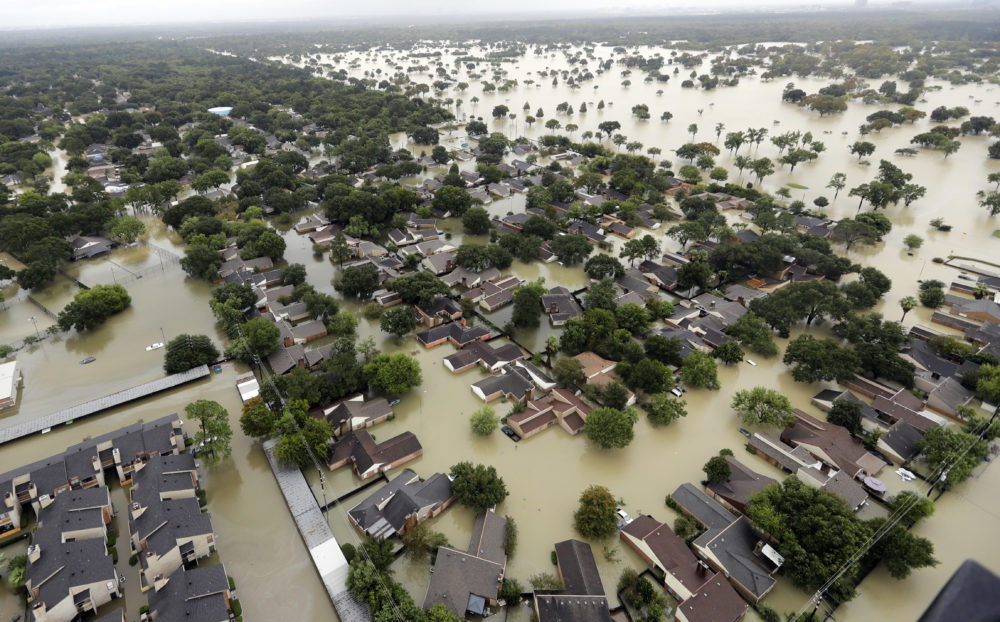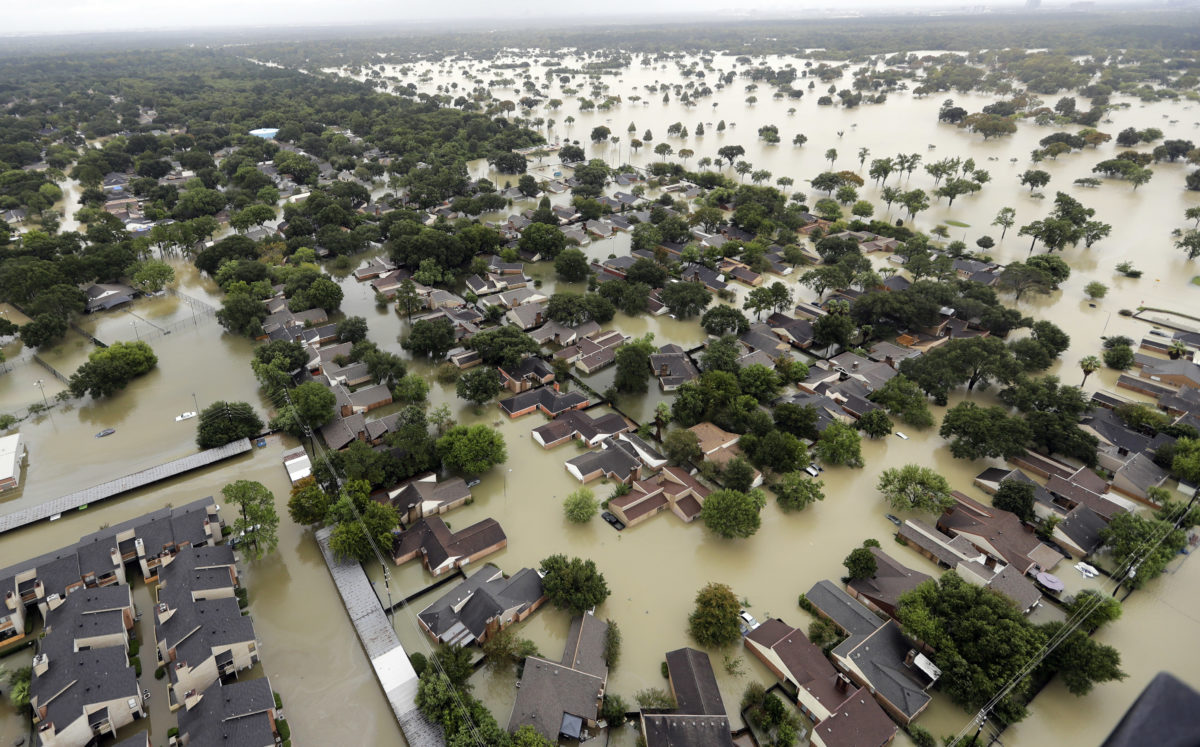 In this Aug. 29, 2017 photo, water from Addicks Reservoir flows into neighborhoods from floodwaters brought on by Tropical Storm Harvey in Houston.
In this Aug. 29, 2017 photo, water from Addicks Reservoir flows into neighborhoods from floodwaters brought on by Tropical Storm Harvey in Houston.
The Harris County Flood Control District has paused 26 groups of flood mitigation projects following revelations of a major funding shortfall for 2018 flood bond projects that were approved by voters after Hurricane Harvey.
The flood control district is also currently facing about a $410 million shortfall on dozens of post-Harvey flood projects.
Harris County Flood Control District Executive Director Tina Peterson revealed that about 15 line items in the bond, identified in county documents as ‘bond IDs,’ were determined to be unfeasible after engineering analyses. Updated information about the bond was presented to county commissioners last week, several months after the flood control district projected that the county was more than $1 billion short on funding for the projects — significantly larger than the now-projected $410 million shortfall.
The county has since implemented a framework, sectioned into several quartiles, to finance certain flood mitigation work in high-priority locations.
Just a year after Hurricane Harvey devastated the Texas coast, voters in Harris County OK’d major repairs to flood-damaged drainage infrastructure, channel modifications to improve storm water conveyance, voluntary buyouts of flood-prone properties, and a major overhaul of the county’s flood warning system.
The bond — which has since been encumbered by an eight percent inflationary cost increase — immediately presented hurdles for county engineers and flood control staffers since it was created to have a significant funding gap. The $2.5 billion OK’d by voters that year would only go to cover 50 percent of the $5 billion needed for flood mitigation projects in the aftermath of Harvey.
Peterson said the county has secured about $2.7 billion in partnerships from local, state and federal funding sources. But a major gap in funding remains and commissioners floated the possibility of going back to the voters in the future to secure the remaining money needed to finish up those projects.
At least 109 projects have been completed so far, and an additional 75 groups of projects are expected to be completed in the next three to five years. The 15 line items that were cancelled didn’t have a clear scope. Those include projects where the county was unable to legally secure right-of-ways, and ones that presented gaps between what was first designed and the practicalities on the ground.
Harris County Judge Lina Hidalgo said it wouldn’t be possible under the statute for the county to go for another bond election until the 75 line items are completed.
“The direction from commissioners court was to fulfill all quartile 1 projects in the bond, which will serve the communities and the projects with the highest need,” Hidalgo said. “And the way that was defined — the number of people benefited, the number of structures benefited, the existing conditions of the flood control.”
Since Hurricane Harvey, 3,100 families in the floodplains have received voluntary buy-outs. The county has built more than 46,000 linear feet of conveyance improvements and removed 183,000 structures from the floodplain, Hidalgo said. Precinct 3 Commissioner Tom Ramsey said the county has completed $1.5 billion in flood bond projects.
Precinct 1 Commissioner Rodney Ellis said that a lower voter turnout in 2018 could present another issue if the county were to go back to the voters for additional dollars.
“In no ways should you think we could pass another one with such a small percentage of the people voting,” Ellis said. “It will probably have to go on the ballot when some of us are on the ballot in a normal cycle. And you want to make sure that you give people a clear idea of what their expectations are.”
A critical letter forwarded to county staffers and signed by former and current members of the Harris County Community Flood Resilience Task Force last week calls for more community input on the prioritization of the flood bond projects.
Members of the task force — a group established in 2020 to advise the county on equitable flood planning — also raised concerns about a recent bill filed by Republican state Senator Paul Bettencourt that would put the state back in charge of the Harris County Flood Control District.
The flood control district, which was created by the Texas Legislature in 1937 after a string of devastating floods, did not immediately respond to an email seeking comment on Monday.
